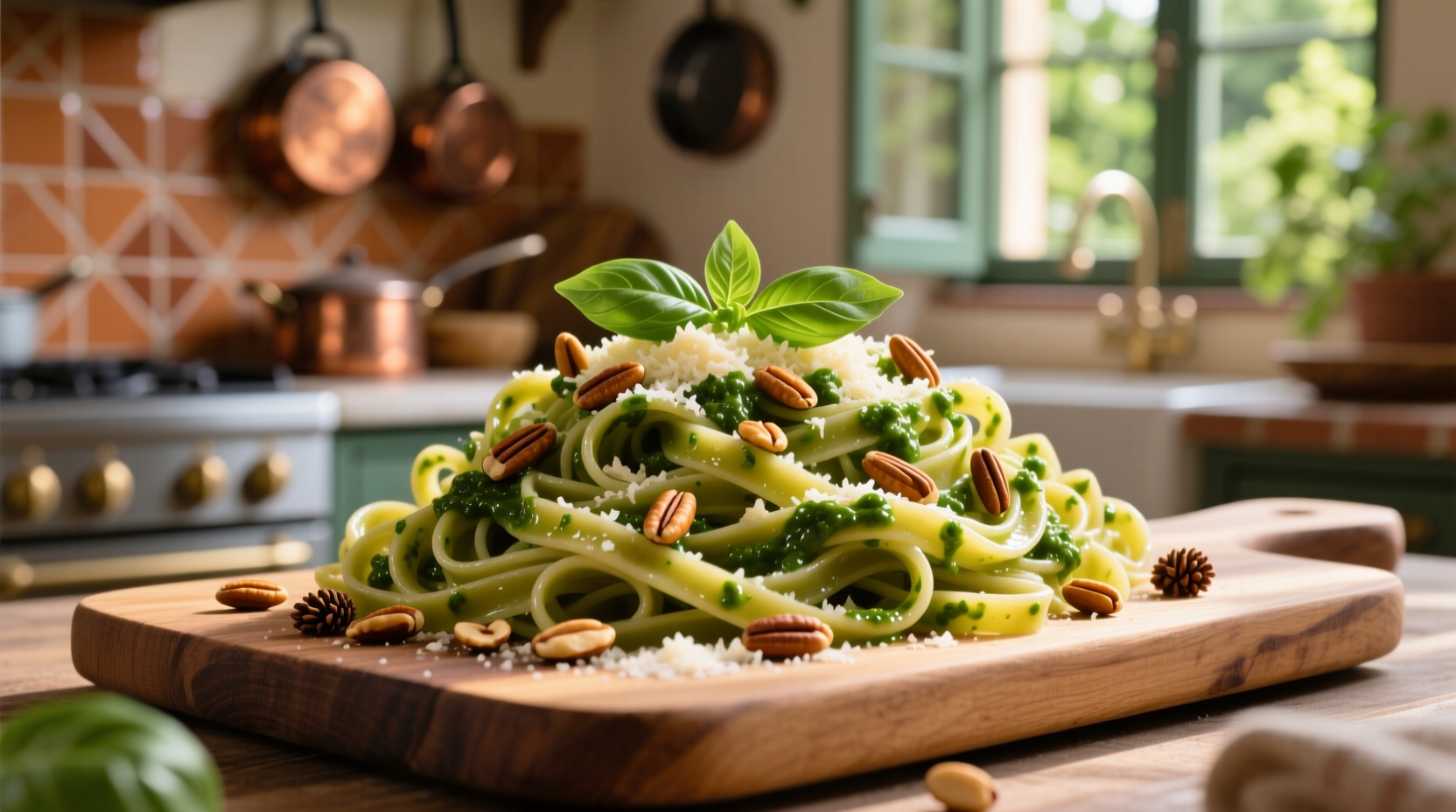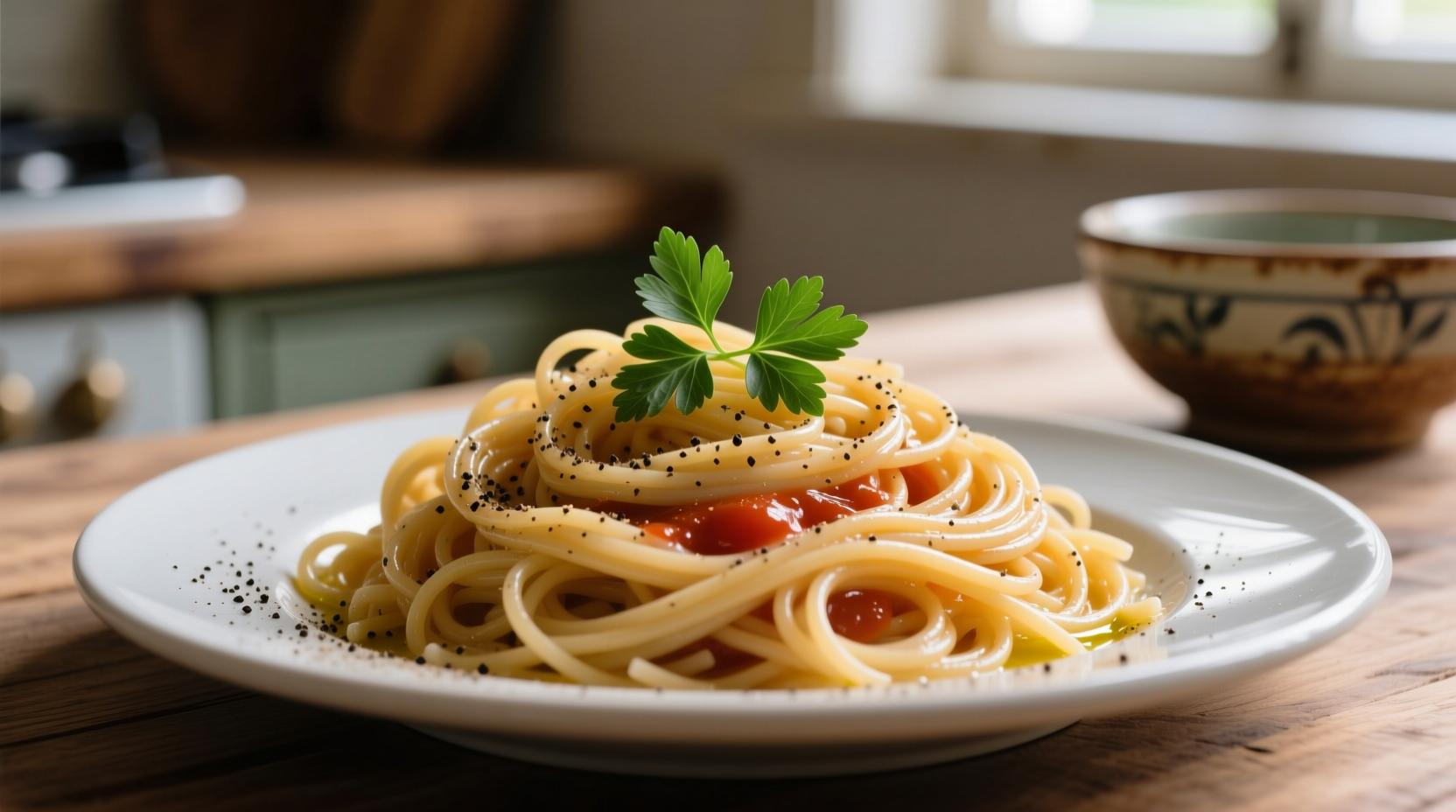When you're searching for pasta without tomato sauce, you're likely looking for alternatives that accommodate dietary restrictions, offer new flavor experiences, or solve specific cooking challenges. Whether you're managing acid reflux, following a nightshade-free diet, or simply tired of the same red sauce, these five authentic pasta preparations deliver satisfying meals without compromising on taste or tradition.
Why Explore Pasta Without Tomato Sauce?
Tomato-based sauces dominate Italian cuisine in many Western countries, but authentic regional Italian cooking features countless pasta preparations that never touch a tomato. Northern Italian cuisine, particularly in regions like Liguria, Piedmont, and Lombardy, traditionally relies on pesto, butter, cream, and olive oil-based sauces. Understanding these alternatives opens up a world of culinary possibilities while addressing common dietary concerns.
| Sauce Type | Preparation Time | Dietary Compatibility | Best Pasta Pairings |
|---|---|---|---|
| Pesto Genovese | 10 minutes | Vegetarian, nut-free options available | Trofie, linguine, spaghetti |
| Cacio e Pepe | 15 minutes | Vegetarian, gluten-free adaptable | Spaghetti, tonnarelli |
| Aglio e Olio | 8 minutes | Vegan, gluten-free adaptable | Spaghetti, linguine |
| Gorgonzola Cream | 12 minutes | Vegetarian, nut-free | Penne, rigatoni |
| Seafood Puttanesca | 20 minutes | Pescatarian, gluten-free adaptable | Linguine, spaghetti |
The Evolution of Pasta Sauces Beyond Tomato
While tomatoes became integral to Southern Italian cooking after their introduction from the Americas in the 16th century, pasta existed for centuries before tomato sauce entered the picture. Historical records from the Encyclopedia Britannica show pasta preparations dating back to 1st century Roman times, with early sauces featuring olive oil, cheese, and herbs.
1st Century CE: Early pasta-like dishes documented in Roman texts
12th Century: First confirmed mention of "itriyya" (dried noodles) in Sicily
16th Century: Tomatoes introduced to Europe from the Americas
18th Century: Tomato-based sauces begin appearing in Southern Italian cooking
19th Century: Pasta with tomato sauce becomes popularized globally
21st Century: Renewed interest in pre-tomato pasta traditions
Mastering Pasta Without Tomato Sauce: Step-by-Step
1. Selecting the Right Pasta Shape
The shape of your pasta significantly impacts how sauce adheres and distributes. For oil-based sauces like aglio e olio, choose long, thin strands like spaghetti that capture the light coating. For cream or cheese-based sauces, opt for textured shapes like penne or rigatoni that hold thicker sauces in their crevices. Traditional Italian cooking matches sauce consistency to pasta geometry—a practice documented by culinary historians at the Italian Food Heritage Association.
2. Perfecting the Emulsion Technique
The secret to restaurant-quality pasta without tomato sauce lies in creating a proper emulsion. As Antonio Rodriguez explains in his culinary workshops, "The magic happens when you combine starchy pasta water with your fat-based sauce. This creates a silky coating that clings to every strand." Follow these steps:
- Cook pasta 1 minute less than package instructions
- Reserve 1 cup of starchy cooking water before draining
- Finish cooking pasta in the sauce pan with ¼ cup pasta water
- Add sauce ingredients gradually while stirring constantly
- Continue stirring until liquid reduces to a glossy coating
3. Building Flavor Layers Without Tomato
Without the acidity and umami of tomatoes, you'll need to create depth through other means. Professional chefs use these techniques:
- Umami boosters: Anchovy paste, mushrooms, or Parmesan rind
- Acidity alternatives: Lemon zest, white wine, or vinegar
- Texture elements: Toasted breadcrumbs, pine nuts, or crispy pancetta
- Herb infusions: Fresh basil, parsley, or sage added at the end

Dietary Adaptations for Special Needs
One of the greatest advantages of pasta without tomato sauce is its adaptability to various dietary requirements. Unlike tomato-based sauces which present challenges for those with nightshade sensitivities or acid reflux, these alternatives offer solutions:
Vegan Options
Replace cheese-based sauces with cashew cream or nutritional yeast blends. For pesto, substitute Parmesan with 2 tablespoons nutritional yeast per serving. The Vegan Health Institute confirms these substitutions maintain adequate B12 levels when properly formulated.
Gluten-Free Considerations
When using gluten-free pasta, increase sauce quantity by 25% as these noodles absorb more liquid. Cook al dente and finish in the sauce immediately to prevent over-softening. The Celiac Disease Foundation recommends rinsing gluten-free pasta only if using oil-based sauces to help sauce adherence.
Avoiding Common Mistakes
Even experienced cooks make these errors when preparing pasta without tomato sauce:
- Adding oil to cooking water: Prevents sauce from adhering to pasta
- Overcooking pasta: Results in mushy texture that won't hold sauce
- Using cold pasta water: Causes sauce to break instead of emulsify
- Adding all sauce at once: Creates uneven coating rather than proper emulsion
Storage and Reheating Guidelines
Pasta without tomato sauce often reheats better than tomato-based versions. For optimal results:
- Store sauce and pasta separately when possible
- Refrigerate for up to 3 days in airtight containers
- Reheat with a splash of water or broth to restore moisture
- Avoid microwaving cheese-based sauces which can separate
- Cream sauces often improve overnight as flavors meld
Expanding Your Pasta Repertoire
Once you've mastered these foundational recipes, experiment with seasonal variations. In spring, incorporate fresh peas and asparagus into your aglio e olio. During summer, try a cold pasta salad with pesto and grilled vegetables. Fall brings opportunities for butternut squash cream sauces, while winter pairs beautifully with hearty mushroom and truffle preparations. The versatility of pasta without tomato sauce ensures you'll never run out of delicious options throughout the year.











 浙公网安备
33010002000092号
浙公网安备
33010002000092号 浙B2-20120091-4
浙B2-20120091-4